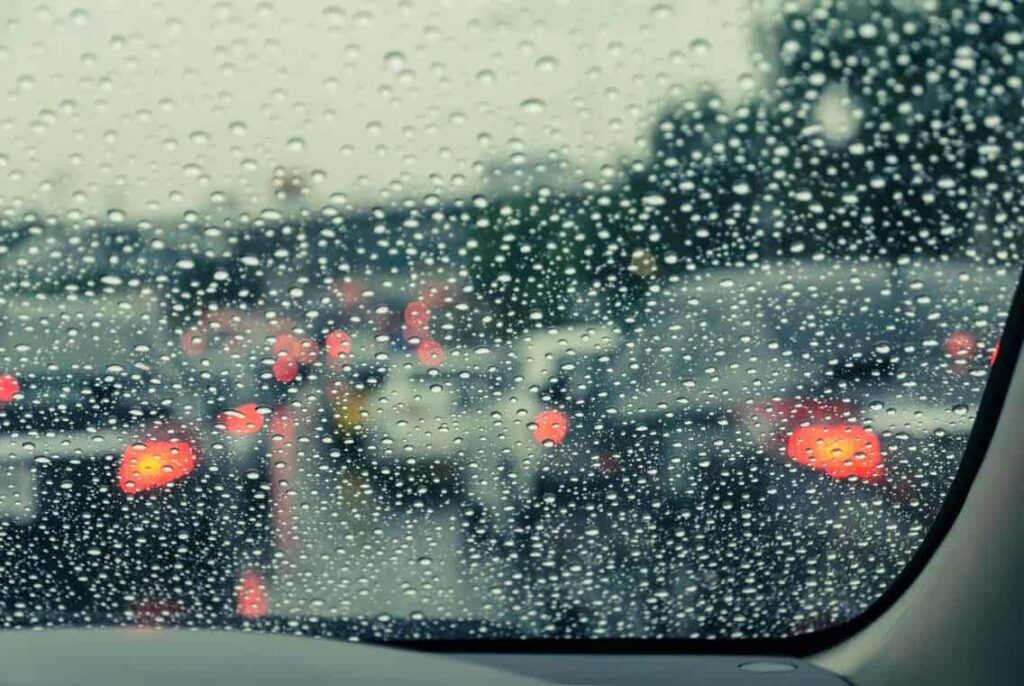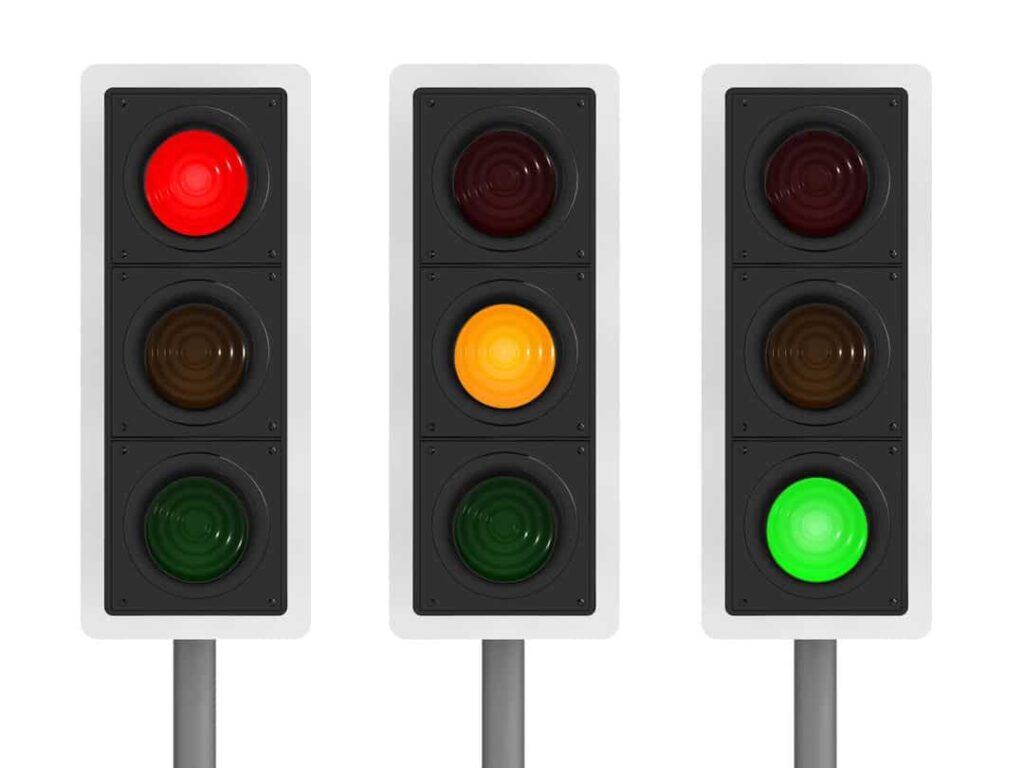3 January 2020 Concept Car
We all start out as safe drivers. Among the most important parts of taking your driver’s license is to pay close attention to traffic, to drive carefully and to follow regulations. And so we diligently do all that – because it makes sense, because we have seen the shocking images of crash sites, and because we want to keep our instructor happy.
As soon as we hold that license in our hands, however, something changes. Perhaps for the first few months, we’re still model citizens. But even then, our attitude is no longer as strict as it used to be.
Ignoring a red light on an empty street? What’s going to happen?
Driving a little faster than the speed limit? Everyone else is doing it!
Using your phone while driving? It’s just one call …
Each year, there are almost 175,000 crashes in Britain, more than 1,700 of those with a fatal ending.
Don’t let it come to this. In this guide to safe driving, we take a look at the main reasons why there are still so many road casualties and what puts you at risk. And obviously, we will also provide you with some of the best recommendations on how to avoid getting caught up in a dangerous incident yourself.
First, though, let’s take a look at the actual numbers and clear some things up.
Yes, accident numbers have gone down, as have the numbers of casualties. As recently as 2015, total casualties still stood at 180,000. Since then, the overall number of accidents on the road has decreased by 6% in the past three years.
The number of fatally wounded in these crashes has also gone down, by pretty much the same amount.
All of this is good news. But it is certainly no reason to rejoice or close the debate on road safety.
For one, the numbers are known to fluctuate. In 2016, road deaths actually increased , before taking a bigger dip in 2017. Whether we are witnessing a long-term development or not will need a little more time to decide.
And then, the numbers are still shockingly high. Especially fatalities remain a reason for concern. This is even more so, since so many of them tend to be young. There is very little more horrifying than losing a beloved spouse to a car crash. So every fatality is one too many in our books.
Are autonomous cars the solution?
Defensive Driving
Illnesses that can affect your driving
Risk Factors
Forces of Nature: Summertime and Night Time
Safe Driving Strategies
Danger scenarios
Safe Driving Recommendations
The Future: Technologies that could save your life
It has sometimes been suggested that autonomous cars could protect us against crashs. Indeed, they might. If car makers can agree on shared standards, autonomous cars will definitely make traffic more predictable – which is one of the biggest steps forward in terms of safety.
Machines are also a lot faster than humans, which allows them to react to unforeseen events much more efficiently. This can prevent situations like breaking for a stray dog on the highway from spiralling out of control.
Autonomous cars do not get tired and they don’t change their driving style depending on their mood or emotional state. You certainly wouldn’t expect a google car to drive faster or more aggressively just because you forgot to wax it after its Sunday wash.
Test drives so far have had acceptable results. But there is also a lot of space for improvement. Autonomous cars, it should be noted, have been involved in crashes with fatal injuries.
Many of the current problems of self driving vehicles are related to the visual recognition system. Google cars, for example, are finding it hard to decide whether that small white object on the road ahead is a piece of crumpled up paper (harmless) or a rock (potentially dangerous).
At the same time, the line between a malfunction and an inbuilt risk is a fine one.
A Tesla running on autopilot, for example, was recently involved in a deadly crash. Critics have noted the fact that it failed to warn the driver of a tractor trailer passing the road. However, the autopilot can not be expected to do this. It is merely a tool to assist the driver for short periods, during which it can keep a safe distance from other cars and stay within the lane. Any longer than that and you’re facing a safety risk.
In this particular tragic accident, the driver had several seconds to spot the trailer and react accordingly. He didn’t. So even though the car was driving, the crash happened because of an error in human judgement.

The concept of defensive driving has developed as a response to these issues. Defensive driving is not the only concept for safer driving. But it is certainly the most popular and widely applied one.
We’ll show you everything you need to know about defensive driving in this article. First, though, it’s important to understand that defensive driving is not just a tool box. It is fundamentally a different psychological approach.
Rather than trying to get from one place to the next as quickly as possible and considering the other vehicles as obstacles, you are putting safety first. Your goal is to keep everyone safe from harm, not just yourself but the other drivers, too.
To achieve this, you will need to change your focus. A safe driver is an active driver and you will need to start to take a bigger picture, think and plan ahead, create more space for different responses, become more flexible in your expectations and more predictable in your actions.
In the next section, we’ll show you the most dangerous risk factors on the road. There are, however, a few more, which we did not single out, because we thought they were too obvious. Unfortunately, recent statistics show that they are sadly all too often neglected:
Next to more general risks, there are several specific medical conditions that can affect your driving. Thankfully, the consensus today seems to be that a mere diagnosis alone is not enough to label you as unfit to drive. Rather, what matters, is how you’re coping with your problems. If you’ve found ways to successfully treat your illness, as severe as it may be, this can make you a safe driver after all.
Some of the most typical illnesses that affect your driving behaviour are:
Defensive driving doesn’t rule out getting behind the wheel if you are suffering from one of these conditions. It does mean that you should be aware of your weaknesses – and to be honest enough to realise when the moment has come to hand in your keys.
As long as we can’t expect our cars to take care of things themselves, we need to be aware of potential sources of danger.

One of the biggest of these risks is speeding. We may not be quite as speed hungry as Americans, where, in some parts of the country, almost 50% of drivers regularly ignore existing limits. But certainly, we are driving a lot faster than we should. And it’s costing us.
How a Car Works has written an incredible blog post on the topic of reaction time. It makes it more than apparent how we can protect ourselves from harm just by slowing down.
Whereas professional racing drivers can react almost as fast as a machine, human drivers can have reaction times of up to a full second or more. Add to this a few fractions of a second because of a cold or a headache or any other ailment you may have, and you have a recipe for disaster. Every additional mile on your odometer makes your car travel a few feet further – and every inch counts!
Things are perfectly clear when it comes to speeding. Age, meanwhile, is a far more complex topic. Whereas one would assume the youngest and oldest drivers to accrue the most crashes, this is not quite how things pan out in practise.
In fact, drivers are still extremely careful during their first year or two behind the wheel. It is only after they gain more self confidence that they start behaving recklessly. This is why the age group between 20 and 25 is actually the most at risk to end up in a crash.
Experience does matter, however. This explains why drivers over 40 are often the safest drivers. Their reaction times may not be the fastest any more. But they will not have to react that fast, since they will avoid dangerous situations from the outset.
It also explains why very young drivers are at a particularly high risk of ending up in a fatal crash. They may want to drive safely, after all, but may not yet have the instincts and skills to save themselves in case things do get rough.
Let’s take a closer look at this for a second.
For many years, the car world only had one thing on its mind: How to get older drivers off the road. Whenever there was an accident involving a person of advanced age, the media were all over it. When the same happened to a younger driver, no one was interested.
More and more, older drivers were finding this not just unfair but hard to bear.
Both of which are excellent preconditions for safe and defensive driving. Contrary to this, many teen drivers have less control – of their car, their emotions, their actions.
This is why the current trend is towards keeping senior citizens mobile for as long as possible. An in-depth article by the New York Times has plenty of ideas to make this happen:
It may help, however, to seek advice from an occupational therapy driving rehabilitation specialist. They can help with finding the car that best suits your needs.

Here’s an interesting tidbit: it is generally assumed that women are safer drivers than men. Depending on how you look at them, statistics do seem to bear this out. However, the gap between male and female drivers isn’t as big as you’d expect – and women are unfortunately ‘closing in’.
This is mainly down to one specific vice.
While men enjoy driving (too) fast, women are finding it hard to let go of their smartphones on the road. This puts them at a greater risk of being distracted. And there are few things more conducive to a crash than distractions.
Obviously, the most poisonous combination is having inexperienced female drivers playing on their phones. But whatever your age or gender, you should always focus on the task at hand.
For many years, insurance companies in the USA have sold policies to women at a reduced rate. Their argument: Women are more careful drivers and less in danger of causing a crash. Therefore, their policies should be adjusted to reflect this.
In theory, there is nothing wrong with this. Many, albeit not all, insurance policies naturally reward safe driving, and partly verify this by conducting larger-sample analysis. If you’re a safe driving male, this is obviously to your disadvantage. But on average, these assumptions do make sense.
For one, there are roughly as many female and male drivers. More precisely, there are today more women with a valid driver’s license than men, but the difference is pretty insignificant. This makes comparing the numbers a lot easier.
In absolute numbers, men are involved in more accidents. Their risk of getting caught up in a fatal accident is also higher – a lot higher, in fact. Ironically, 51% of men assume they are safer than the average driver, whereas only 39% of women think so.
However, men also drive a lot more miles than women. Based on this, one would naturally expect their risk of getting caught in a crash to be higher as well. Once you take this into account, the picture is no longer quite as clear. Using international data on traffic accidents as a basis, Traffic Safety Store has done the maths and arrived at an interesting result:
“Men drive about 30 percent more miles than women. Yet, they’re implicated in slightly less than 30 percent of car accidents. Men do cause more accidents, but they are actually less at-risk than women, by a small margin.”
Many still disagree with this, but one thing’s for sure: Men and women do drive differently and you should take this into consideration when thinking about how to drive more safely yourself.
This is something few people take into consideration. But social aspects of driving are a major source of problems, especially for younger drivers.
Imagine you and friends just left a party late at night. Even though you were assigned as the driver, you did have two small beers. Are you going to stay firm and make everyone take the cab tonight? Or are you going to just follow through with the plan, because ‘those two small beers can’t hurt’?
Or imagine you’re taking a spin with your buddies and they are making fun of you because you’re sticking to the speed limit. Are you going to let them have their fun? Or are you going to push down the gas pedal a little more to save your face?
Situations like these may seem outright childish for more experienced drivers. But they are very serious sources of conflict for many teenagers and young drivers. The US Department of Health and Human Services puts it thus: “Risky driving among teenage drivers is higher among teens who report that their friends drive in a risky manner.”

We often think of safe driving being mainly a question of personality and character. The logic of this train of thought would be to simply know your weaknesses and act accordingly.
Unfortunately, it is not enough to avoid distractions, stick to the speed limit and resist giving in to peer pressures. There are other factors that make driving dangerous – and some of them are outside your control.
The weather is one of them. It is an interesting, but rarely acknowledged fact that most crashes occur in Summer time. According to an extensive 24-year (!) study, the following months are the most deadly for drivers:
As you can see, there is not a single Winter month among these!
This obviously goes against common sense.
Experts have come up with a few convincing explanations for this paradox:
Obviously, this doesn’t mean you should leave your car in the garage in the vacation season. What it does mean is that you should be extra careful when taking your family for a trip and especially to wear your seatbelts at all times – even if it makes you feel even hotter.
We’ll let you in on a dark secret. There’s a factor that is more dangerous than any of the risks we have mentioned until now. A factor so dangerous that it should seriously make you re-think your approach to driving. A factor so grave that some insurance companies are actually forcing anyone taking out a policy with them to keep their cars at home for as long as it applies.
This factor is light.
As soon as the sun has set, the risk for crashes increases manifold. As statistics reveal, over 40% of all deadly crashes occur at night, although streets are 60% less busy than during the day. 32% of all fatalities in the age group of 16-17 year old drivers occurs between 9pm and 6am. The only other time of day that even comes close to matching this is rush hour.
Obviously, the lack of light is one essential part of this danger. Even though modern car lamps are a lot better than they used to be and although various technical gadgets warn drivers against collisions or straying too far from their lane, reduced visibility is still a vital safety problem.
However, what makes night time driving so particularly dangerous is that it combines many different risk factors: Reduced concentration (and thus higher distraction), alcohol, often somewhat less advantageous weather conditions. It is this cocktail that causes the spike in accident numbers.
Whereas it seems somewhat unreasonable not to drive in the Summer at all, it makes sense to seriously consider imposing a driving embargo on yourself after sunset.
In fact, experiments with this have been astoundingly successful. In some US states, teenage car crash fatalities went down by as much as 60% if night time driving sanctions were imposed. No wonder, then, that some insurance companies have followed suite. If you’re taking out a telematics car insurance these days, you can expect it to include a clause punishing night time driving in some form.
If you want to reduce your risk for a car crash, give this some thought. Unless you’re living in the countryside and have an important date to get to, it makes a lot of sense to use public transport in the wee hours of the day.
Now we’ve taken an in-depth look at the different elements that can make driving problematic, let’s turn towards a few practical steps that can protect you. First off, here are a few general considerations about how to achieve safer driving:
Whenever you’re leaving on a long journey, it really helps to set up a schedule. Make sure to set fairly exact times for taking breaks and getting something to eat. Then, stick to them.
As with any task, your body will gradually tire of driving and your concentration is going to suffer. This is why you should leave the road for a few minutes every 1,5 or 2 hours and take some time to relax or to simply close your eyes.
Nationwide.com calls this a ‘safe driving’ plan.
You can also improve your mindset while driving. Wikihow has some excellent suggestions, which include simple physical exercises to fight off muscle stiffness, mindfulness practise to improve concentration and how to deal with stressful situations.
If the floor of your car looks like a waste disposal site, you need to take action. Although litter is mostly a hygiene issue, a lack of tidiness can turn into a serious safety issue as well. Stretching to the floor to get that CD you want or rummaging through wraps and bits of paper to find a map are hardly conducive to safety. Neither are heavy objects which can roll around or turn into deadly weapons in case of a crash.
Only a clean and tidy car is truly a safe car. No need to overdo things, but at least make sure you can still see the the footmats in front of the car and you should be fine.

Remember the recommendation to keep a 2 second distance from the car in front of you? Rules of thumb like this one are helpful. But they are always for ideal weather conditions only.
Slippery roads can make breaking more dangerous. Fog or heavy rain can severely impair your sight. This means that you need to adjust your behaviour and expectations whenever the circumstances are less than perfect.
Ironically, the same is true in reverse. If traffic is slightly faster than usual, sticking stubbornly to a very low speed can put you in danger, too. This is why Canadian website CBC suggests to “go with the traffic flow, driving at the speed that most other vehicles are going.”
As we mentioned before, one of the greatest benefits about autonomous cars is that they increase predictability on the road. If every car can safely predict how other cars will behave, the situation changes considerably and everything becomes a lot safer.
Obviously, it would be fantastic if all the other drivers would heed this recommendation. But you can already set a good example and take a first step towards this goal yourself. By avoiding sudden or unnecessary lane changes, using your blinkers (and using them well ahead of your next move) and breaking slowly rather than abruptly, you can make things more transparent for others.
For once, being predictable is a good thing.
It can never hurt to do some planning. This is true when it comes to your Christmas presents. And it is even more true in peak time traffic.
In terms of complexity, navigating a car through a city centre or on a highway is as demanding as a game of chess. In fact, it is possibly even more challenging, as you’re dealing with more than just one opponent. Experts refer to this as ‘game theory’: A situation where every one’s next move depends on the moves of all the other participants.
That’s what makes it so particularly hard to implement our previous recommendation to ‘avoid confusion’.
And still, you can think a few steps ahead after all:
Before we turn towards even more recommendations, let’s take a look at some potential danger situations. Parents.com has put together a guide for some of the most common road hazards and how to avoid getting caught up in one:
Admittedly, some of these scenarios are more likely than others. But it certainly helps to occasionally think about them and about your reaction. Being prepared always helps!
In the following section, we have compiled some additional recommendations for driving more safely. The list is by no means complete. But all of these suggestions will help you remain casualty-free. And that’s all you can really ask for.
We’ve said it before, but we’ll gladly say it again: You can’t expect other drivers to follow the rules as much as you do. The only thing you can do is to drive as safely as you possibly can. Even then, however, no one’s perfect. This goes as much for others as it applies to yourself.
It is therefore imperative to take into consideration that even if every one’s on their best behaviour, you can still make mistakes. Mistakes that can be costly, mistakes that can even be fatal.
Realising this can help you stay focused and alert at all times.
This recommendation is closely related to the one above. Even if you’re absolutely sure the other car needs to yield, after all, would you seriously use this as an argument to risk a full-on collision?
Instead, accept that the driver may simply be mistaken or that he may be too distracted to pay attention and let them pass. Forget about pride or power. Driving is neither a battle nor the right tool to boost your ego.
Arriving safely is your goal. And if you have to yield to achieve it, so be it.

This is one of those recommendations that look plain silly on paper, but are surprisingly effective in reality. It goes without saying that driving through a red traffic light is against the rules. But it’s one of those things where we like to be a bit lenient. Everyone does it, after all, so why shouldn’t you?
The reason why you shouldn’t is very simple: It’s extremely dangerous. Not stopping on red is the leading cause for accidents at intersections and the consequences can be disastrous.
If it helps, remind yourself that ignoring red hardly ever gets you to your destination any faster.
Easier said than done, of course. But there is only a fine line between getting worked up over traffic and full-blown road rage. While the former can still be somewhat healthy and help you blow off some steam, the latter is dangerous.
Although strict weapon laws in the UK protect us from getting shot because of a traffic disagreement, debates can get heated here, too. And people have been killed for minor things like … not yielding.
As Trusted Choice rightly argues:
“Since you don’t know who might be behind the wheel of that vehicle that just cut you off, it’s safest to back away and overlook the offence.”
Lest we forget: Only a well-maintained car is a safe car. And a badly maintained car can ruin every effort at safe driving from the outset. This is why it is important to keep your car in good shape at all times.
You don’t need to be a technician to do this. Just taking your car to routine inspections is a big step towards more safety. On top of that, it pays off to regularly take a few minutes to check on the engine and breaks and to notify your mechanic as soon as you detect any suspicious noise or sign of a failure.
And make sure to act on warning lights that don’t turn off again. All too many drivers appear to think these lights are merely there to make the interior of the car more colourful.
Keeping your car in good shape also includes preparing for adverse weather conditions. Winter tires are a must in the cold time of year, for example. And it comes recommended to turn off technologies such as cruise control when there’s a danger of icy roads.

On paper, cars haven’t changed all that much. They still have a passenger compartment and four wheels powered by an engine. Underneath the hood, however, they can sometimes look like spaceships. Over the past thirty years, vehicles have not just become faster, more spacious and more efficient. Most of all, they have become safer than ever.
We don’t believe we’re exaggerating if we claim that the current trend towards ‘intelligent’ driving assistants is much more than just an evolutionary step for the automobile sector. They have the potential to make driving as safe as riding an elevator. Which is pretty incredibly safe, in case you’re wondering.
It therefore seemed imperative to close this article on safe driving with a section on the latest technologies keeping you from harm. The following list has been compiled with the help of an excellent report in finance magazine Forbes.
This no longer a feature for the future. Cruise Control has by now become a standard in most new cars. And rightly so. This technology uses sensors integrated into the front of your car to lock in the distance between yourself and the vehicle in front of you. As we’ve made clear before, keeping a safe distance is one of the best approaches to avoid a crash.
ACC is usually bundled with emergency breaking. Should the sensors detect that the other driver is quickly loosing speed, it reacts by slamming down the breaks automatically and tightening your seatbelts. In essence, it does what you would, too – only a lot faster.
Cruise Control will need to be improved, as current versions can be dangerous in some situations. However, its overall impact, in as much as it can be measured, appears to be beneficial.
Lane Assistants, also called Lane Departure Warning or Lane Keep, aim at keeping you within the limits of your lane on the highway. This can be extremely useful should your concentration sag for a moment, causing you to drift off into the lane next to you – and crash into a neighbouring car.
There are two basic approaches to Lane Assistants: Lane Departure Warning systems merely alert you should you leave the delineations of the lane. Lane Keep, meanwhile, is a more advanced technology that will automatically adjust your position so your car remains perfectly where it should be.
According to Consumer Reports, well-functioning Lane Warning technology can be true ‘relationship savers’. However, the devices of some manufacturers appear to work better than those of others. All of them are known to cause a false alarm from time to time.
Both these technologies share the same basic premise: Making objects visible that you would normally miss using ‘conventional’ techniques.
Rear-view cameras, in themselves, are nothing new. Some sports cars in the 80s already used these, albeit it more out of necessity than functionality: The Lambourghini Countach was built so unergonomically that it was simply impossible for the driver to use ‘mechanical’ rear view mirrors.
There is something to be said about using cameras in a wider range of cars. Cameras provide a less distorted image and they also give you a far broader picture of what is happening behind you. It will take some time to get used to them, especially if you’ve driven using mirrors for many years. But generally speaking, they appear to be a good idea.
Blind Spot Detection uses sensors, similar to those of Cruise Control. Since these blind spots are a major source of crashes, hopes are high for this technology.
This is one of the technologies that will almost certainly define the next round of safety features. Facial Recognition is part of a whole palette of tools aimed at checking your health and concentration. Whenever these are worrisome, the software can suggest or initiate steps to get you back on track again.
Facial Recognition monitors your facial expressions for signs of fatigue or pain. Smartwatches can measure your heart rate and blood pressure. Even more advanced tools will be capable of analysing the air within the compartment or your sweat for indications of bad health.
You can expect these futuristic devices to arrive on markets very soon, as there is a vested interest in them from insurance companies. Already today, telematics black boxes will use data from your driving behaviour to detect potential dangers, from aggression to fatigue. Facial recognition is merely the next step.
As you’d expect, app makers also have something to say about safe driving. Your smartphone can help you stay focused on your work so why shouldn’t it be able to keep you concentrated on driving as well?
DriveMode reduces the number of contacts that can be accessed while you’re driving. Although it still allows you to make calls, it helps keep these to a minimum. Other apps can send calls to voicemail automatically once you exceed a certain speed.
TxtBlocker is a useful app for worried parents. It will block texting for all devices within the car.
Finally, ‘nearly there’ is a cute app with just a single functionality. As soon as you’re close to your specified goal, it sends out a text message alerting your contact that you’re ‘nearly there’. It is doubtful that this app will save many lives. But even if it doesn’t, it can help you stay focused on what’s really important.
3 January 2020 Concept Car